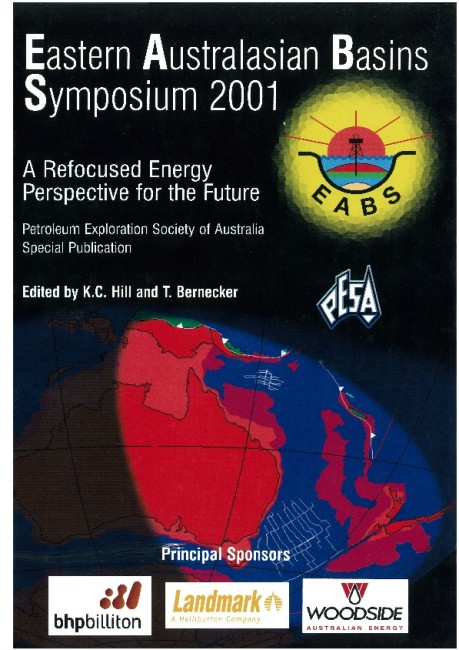Publication Name: Eastern Australian Basins Symposium 2001
Authors: M. Lisk, D. Hall, J. Ostby and M.P. Brincat
Date Published: November 2001
Number of Pages: 33
Reference Type: Magazine Article
Abstract:
An investigation of the oil migration risks in the Great Australian Bight has been completed using an integrated approach that combines conventional oil and gas shows with fluid inclusion evaluation techniques. Fluid nclusion 'oil shows' detected by fluorescence microscopy and mass spectrometric techniques provide evidence of migration at reservoir horizons additional to those indicated from the conventional show data.In the Duntroon Basin, oil expulsion and migration from Middle to Lower Cretaceous coaly source facies is indicated by the presence of oil inclusions within intercalated sandstones. Evidence for oil migration into shallower, high reservoir quality, Upper Cretaceous and Tertiary sandstones is also recorded, substantially reducing the oil migration risk for these shallower reservoirs. Sourcing of oil from coals of the Cretaceous Upper Borda Formation, previously considered the most likely oil source, can only be responsible for the widespread distribution of these oil shows if faults facilitate vertical fluid migration. The results highlight opportunities for oil migration into shallower reservoirs that have not experienced the significant degradation of reservoir quality
experienced by the Lower Cretaceous reservoirs.
Oil inclusions observed in samples from the Lower Cretaceous section in Potoroo-1 provide the first evidence of an operating migration system in the Ceduna Sub-basin, whilst those seen in the Jerboa-1 well in the Eyre Sub-basin COJTOborate minor oil staining in the Upper Jurassic. The Jerboa results are especially significant, as they have previously been interpreted to reflect the presence of a palaeo-oil column within Upper Jurassic sandstones. Despite being residual in nature, this result is the best evidence to date of a complete petroleum system operating in the Great Australian Bight.
Evidence of widespread oil migration coupled with abundant reservoirs at multiple levels, numerous potential seals and a range of trap styles point to productive petroleum systems that have been inadequately tested by previous drilling.


